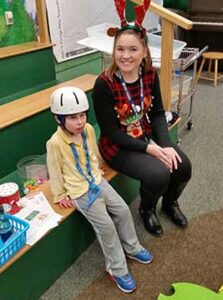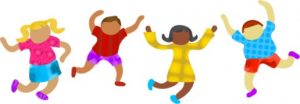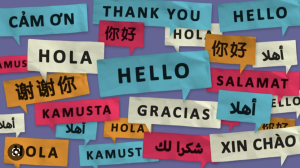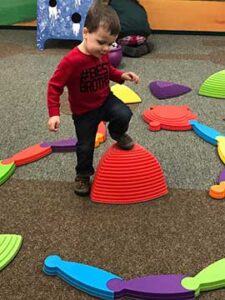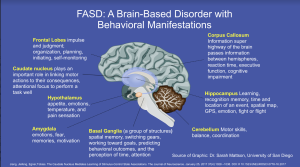
"MAIER will now serve as an information and resource clearinghouse that will assist professionals and families in accessing and navigating programs and services related to inclusive education of all students with disabilities. It will aim to ensure that educators and other service providers, as well as families and individuals with disabilities, receive information about practices to promote inclusion that are grounded in research." Dr. Howorth, Director of MAIER discussing MAIER's expanding mission
List of the research and resource topics expanded on and linked to below
Research Supported by MAIER
Autism Focused Research and Resources
Inclusive-focused and General Special Education Resources
General Resources and Websites
Adaptive and Inclusive Physical Education
Transition from K-12 to Adult
RTI and RTI-Behavior/Positive Behavior Support
Sexuality and Sex Education for Neurodivergent Individuals
Trauma-Informed Educating and Parenting
Fetal Alcohol Syndrome Disorder
Family Engagement and Resources
Multi-Lingual Learners
Physical Safety Resources
Inclusive Literacy Resources
LGBTQIA+ Inclusive Resources
Social Skills and Supports
Information for Students with Unstable Housing
Research supported by the Maine Autism Institute for Education and Research
Studies conducted by researchers at MAIER are ongoing and highlighted in our August 26, 2020 newspost.
Rooks-Ellis, D. L., Jones, B., Sulinski, E., Howorth, S., & Achey, N. (2020) The effectiveness of a brief sexuality education intervention for parents of children with intellectual and developmental disabilities. American Journal of Sexuality Education, 1-21. https://doi.org/10.1080/15546128.2020.1800542
Rooks-Ellis, D. L., Howorth, S. K., Kunze, M., Boulette, S., & Sulinski, E. (2020). Effects of a parent training using telehealth: Equity and access to early intervention for rural families. Journal of Childhood, Education, & Society 1(2), 141-166. https://doi.org/10.37291/2717638X.20201242
Autism-Focused Research and Resources
The Autism Center at OCALI : Serves as a clearinghouse for information on research, resources, and trends to address the autism challenge. The center offers training, technical assistance, and consultation to build professional and program capacity to foster individual learning and growth.
Autism Spectrum Disorders Fact Sheet: Developed by MAIER staff, this one-page fact sheet is suitable for the general public or anyone who may want to gain a better understanding of persons on the autism spectrum and promote acceptance and inclusion.
[ASD Fact Sheet PDF] [ASD Fact Sheet: MS Word]
Autism Fact Sheet / Translations
View and download this basic fact sheet about autism based on CDC facts and information, and available in 15 languages. Developed and made available by the University of Southern California, University Center for Excellence in Developmental Disabilities for families and providers.
Center on Secondary Education for Students with Autism Spectrum Disorders: This research and development project is funded by the U.S. Department of Education and focuses on developing, adapting, and studying a comprehensive school and community-based education program for high school students on the autism spectrum. Research and resources suitable for families, professionals, and educators to support students through their high school years and the transition to adulthood.
The Indiana Resource Center for Autism : Conducts training, consultations, engages in research and disseminates information to build local community capacity to support children and adults on the autism spectrum.
National Clearinghouse on Autism Evidence and Practice: The NCAEP works to develop free professional resources for teachers, therapists, and technical assistance providers who work with individuals with ASD. Resources include detailed information on how to plan, implement, and monitor specific evidence-based practices.
- 2020 EBP Report (PDF)
Supporting College Students with Autism Spectrum Disorders on campus: Teens and adults with autism are increasingly present on college campuses nationwide. To support the success of potential and current students with ASD on Maine campuses, we have gathered a list of resources for families, faculty, staff, and peers. It is our hope to encourage greater understanding of the condition and how it may impact individuals, in support of greater understanding, acceptance, and inclusion in our campus community.
Think College Think College is a national organization located within the Institute for Community Inclusion at UMass, Boston that offers both online resources and technical support for families of persons with IDD and for faculty and educators. Think College offers technical assistance and online trainings to assist education professionals and faculty in supporting students with intellectual disabilities who are considering or pursuing post-secondary education. Training modules and webinars include Universal Design for Learning (UDL), coaching and mentoring college students with IDD, and the roles and responsibilities of campus disability services. Think College staff also offer research summits each year offering an in-depth look at the research related to higher education, employment, and transition. The Think College website includes an online College Search directory of the many college programs across the U.S. for students with intellectual disabilities. Search by program, location, or keywords.
College Success Guide for Neurodiverse College Students – https://www.edumed.org/resources/neurodiverse-healthcare-students/
STEPS (Student Training & Education in Public Service) Online Guide to Support Resources for Students (K through post-secondary) with Autism
Health and Doctor Visits
How Nurses Can Support Children with Autism During Medical Visits. Nurses and other healthcare professionals can take steps to support children with autism and build relationships with parents to make medical visits less stressful for everyone involved.
Inclusive-focused and General Special Education Resources
UMaine Center for Community Inclusion and Disability Studies : Maine’s University Center for Excellence in Developmental Disabilities (UCEDD). CCIDS brings together the resources of the university and Maine communities to enhance the quality of life for individuals with developmental disabilities and their families. Our statewide mission is met through interdisciplinary education, research and evaluation, community engagement, and dissemination of state-of-the-art information that reflect the guiding principles of inclusion, diversity, universal design and access, and social justice.
Professional Organizations
- American Association on Intellectual and Developmental Disabilities: https://aaidd.org/home
- Council for Exceptional Children (CEC): https://www.cec.sped.org/
- Special interest divisions within CEC on a variety of areas in special education and types of disability, each division has various resources: https://www.cec.sped.org/Membership/Special-Interest-Divisions
- Council for Learning Disabilities: https://council-for-learning-disabilities.org/
- CHADD (ADHD professional organization and information): https://chadd.org/
- TASH (focuses on inclusion and advocacy for individuals with significant disabilities): https://tash.org/
- Association of Positive Behavior Support: http://www.apbs.org/
- Wabanaki Council on Disability: Facebook Group Link
Law/Policy
- Individuals with Disabilities Education Act (IDEA): IDEA is the federal law governing grants to states to ensure that children with disabilities (age birth to 20) are identified for timely evaluation and if eligible, provided appropriate services in the least restrictive setting.
- Federal Implementing Regulations: These federal regulations set forth additional requirements that states must follow in implementing IDEA by means of state plans upon which grant approval is based.
- 34 CFR Part 300: Assistance to States for the Education of Children with Disabilities
- 34 CFR Part 303: Early Intervention Program for Infants and Toddlers with Disabilities
- Family Education Rights and Privacy Act (FERPA): These federal regulations set forth the requirements that states must follow in protecting the confidentiality of education records.
- Restraint and Seclusion in Maine (Chapter 33): https://www.maine.gov/doe/cds/restraint
- State Law: In Maine, laws that are specific to the education of children with disabilities are set forth in three chapters of 20-A MRSA (Maine Revised Statutes Annotated):
- Chapter 301: General Provisions
- Chapter 303: Children with Disabilities
- Chapter 304: Maine Educational Center for the Deaf and Hard of Hearing and the Governor Baxter School for the Deaf
- State Regulation: Chapter 101/MUSER: Rule chapter that is specific to the education of children with disabilities in Maine Department of Education Regulations, Chapter 101, Maine Unified Special Education Regulation Birth to Age Twenty (MUSER).
- Wrights Law (resource on various educational laws and policies): http://www.wrightslaw.com/
- The U.S. Department of Education and U.S. Department of Health and Human Services released of an updated joint-policy statement on supporting the inclusion of children with disabilities in early childhood programs. The HHS-ED Policy Statement on the Inclusion of Children with Disabilities in Early Childhood Programs includes a renewed commitment and urgency, as children with disabilities continue to face barriers accessing and fully participating in inclusive early childhood programs.
Early Childhood Practices Tip Sheet
- Growing Ideas Tipsheets and Resources for Guiding Early Childhood Practices- Overview
Physical Safety Resources
Fire safety and prevention resource – www.boondockorbust.com/rv-camping-tips/rv-safety-emergency-preparedness/
Fire safety around Barbeque’s and Campfires: https://www.billyoh.com/resource/barbecues-and-bbq-safety/
Suicide Awareness & Prevention for Healthcare Students – https://www.edumed.org/resources/suicide-awareness-and-prevention-guide/
LGBTQIA+ Inclusive Resources
Online Master’s Degrees for LGBTQIA+ Students and Allies – https://www.onlinemastersdegrees.org/student-resources/lgbtqia-friendly-degrees/
Social Skills Supports
Skillstreaming is a social-emotional learning program designed to help children and youth learn positive ways to have their needs met.
PEERS® Lab at the University of Maine offers trainings, groups, and support for young adults themselves and the familiy members and professionals who work with youth that struggle with interpersonal interactions.
RTI and RTI-Behavior/Positive Behavior Support
- Response to Intervention (RTI) Action Network (information and resources on RTI): http://rtinetwork.org/
- Center on Response to Intervention (resources and tools related to RTI): https://www.rti4success.org/
- Positive Behavior Interventions and Support (PBIS) from the OSEP (Office of Special Education Programs) Technical Assistance Program (information, research, and evaluation resources related to PBIS) : https://www.pbis.org/
- Intervention Central (academic and behavior interventions and other resources): https://www.interventioncentral.org/
- Family-School Collaboration in Positive Behavioral Interventions and Supports: Creating a School Atmosphere to Promote Collaboration – https://www.pbis.org/resource/family-school-collaboration-in-positive-behavioral-interventions-and-supports-creating-a-school-atmosphere-to-promote-collaboration
-
Aligning and Integrating Family Engagement in Positive Behavioral Interventions and Supports (PBIS): Concepts and Strategies for Families and Schools in Key Contexts –
https://www.pbis.org/resource/aligning-and-integrating-family-engagement-in-pbis
Multi-Lingual Learners
Multitiered System of Support for English Learners
Three research-to-practice projects support this work. They are the following:
The English Learner Institute for Teaching and Excellence (ELITE) out of The University of Texas at Austin focuses on improving outcomes for MLs by addressing the language and literacy needs of these students. Here are the resources they provide.
- Educator Resources
- Text Talks: A Strategic Book Club Routine for Building Vocabulary and Comprehension Skills
- Enhancing Vocabulary and Comprehension for English Learners Through an Interactive Read-Aloud System
- Creating Culturally Responsive Classrooms
- Language and Literacy Instruction for ELs
- Family and Community
- Implementing Structured Data Meetings for English Learners
- School Resources
Project LEE / Lectura para Excelencia y Éxito (LEE) focuses specifically on the language and literacy outcomes of MLs. **Translation: Reading for Excellence and Success
The resources they provide are:
- Project briefs
- Meeting the Needs of English Learners with and without Disabilities
- 1: Multitiered Instructional Systems for ELs
- 2: Evidence-Based Tier 2 Intervention Practices for English Learners
- 3: English Learners with Significant Learning Difficulties or Disabilities: Recommendations for Practice
- 4: Fostering Collaborative Partnerships with Families of English Learners within a Multitiered System of Supports
- Meeting the Needs of English Learners with and without Disabilities
- Tools
- PLUSS Framework for Instructional / Intervention Enhancement: Observation Rubric
- PLUSS Lesson Plan Book (in English)
- PLUSS Lesson Plan Book (in Spanish)
- Language Focused Repeated Reading Process
- Literacy Implementation Rubric
- MTSS Action Plan
- MTSS Rubric Worksheet
- PLUSS Framework for Instructional / Intervention Enhancement: Observation Rubric
- Other resources
- Resources for parents
- Videos
Inclusive Literacy Resources
- Writing resources from Reading Rockets: https://www.readingrockets.org/looking-at-writing
- Reading and writing information from Understood.org
- Adolescent Literacy Resource Menu: A Guide for Instructional Leaders from the Meadows Center: https://meadowscenter.org/files/resources/ResourceMenu.pdf
- Literacy Instruction for Students With Multiple and Severe Disabilities Who Use Augmentative/Alternative Communication: https://ceedar.education.ufl.edu/wp-content/uploads/2016/10/IC-Literacy-multiple-severe-disabilities.pdf
- Powerful Writing Strategies for All Students (SRSD book): https://www.amazon.com/Powerful-Writing-Strategies-All-Students/dp/1557667055
- Best Practices in Writing Instruction (book): https://www.guilford.com/books/Best-Practices-in-Writing-Instruction/Graham-MacArthur-Hebert/9781462537969
- Handbook of Writing Research (book, research companion to the book above): https://www.guilford.com/books/Handbook-of-Writing-Research/MacArthur-Graham-Fitzgerald/9781462529315
- Explicit instruction: https://explicitinstruction.org/
- Reading and Writing Instruction in the Upper Elementary Grades: https://meadowscenter.org/files/resources/_Reading.pdf
- One handwriting curriculum: Handwriting without Tears
- Handwriting screener (can create a free login)
- PreK level assessments
- Example assessment
- Pencil obstacle course to practice using a pencil
- Multisensory activities for handwriting
- Tips and Strategies for Supporting Students with Reading Disabilities that present important information about types of reading disabilities, how to help a child with reading difficulties, and how to evaluate a reading program
Curriculum-based Measurement in Inclusive Writing
- Simple ways to assess writing in students with disabilities
- Intervention Central Resources, includes a writing prompt generator
- CBMs spelling and writing (includes directions)
- Giving Feedback on Student Writing
- Various writing evaluation resources from Edutopia
- Other writing assessment resources from Reading Rockets
Early writing and picture prompts:
- Picture prompts are a great way to allow students to draw then write or write based on a picture; this allows students to connect that words have meaning/describe something. Examples:
- Monthly picture and write prompts
- Draw and write activities–students draw three things on a topic then write about each (can be a word)
- Draw and write prompts where students learn to draw something, and then write or dictate a sentence related to the drawing
- Various draw and write prompts:
- Example from Scholastic, the sentences are also started for the students to complete
- Book from Scholastic
- Picture prompts can also be used with older students using any image to describe or write about. The New York Times has a list of 140 visual story starters. The images are also linked to articles if students want to learn more.
- Additional prompts from the New York Times with text including some based on current events/topics
- More visual prompts students could use to draw a picture in response to, brainstorm ideas, write words, write sentences, and so on
- Sequencing cards: To teach students that items in a story/narrative go in order, you can use sequencing cards with pictures to put them in the correct order. After, narrate the story verbally. Examples:
- Snowman sequence example with four boxes
- Sequencing from a story example from an educational publisher
- Blank example for students to draw (or, use pictures) or write
- You could also use story maps like this one from Reading Rockets to practice sequencing a story
- Sequencing could also be done on paper (you could replicate the links below with any story/text you already have access to):
- Sequencing worksheets (not the fanciest website, but examples to give you an idea)
- Sequencing worksheets with text (also not a pretty website, but free)
- Paragraph puzzle example: Students are given individual sentences to cut out then put in order to form a correct paragraph. You could even do something like this with a student’s paragraph–if the sentences are out of order, type them and then cut them into strips to reorder.
Instruction/strategies/interventions in Writing:
- Teaching elementary students to be effective writers
- Teaching secondary students to be effective writers
- Conference presentation about SRSD from one of the authors of SRSD (Dr. Karen Harris of Arizona State University)
- SRSD overview video from SRSD Online for more background information
- SRSD resources from ThinkSRSD.org (online PD)
- SRSD overview from the What Works Clearinghouse
- Writing from the What Works Clearinghouse that reviews and summarizes the research on interventions. The documents would be good to save for later use.
- Quick overview of prewriting from Reading Rockets; this link gives an instructional sequence of using prewriting in the blue “Lesson Plan” box
- Various graphic organizers from OCALI including for reading (autism association, lots of great free trainings and resources if you are not familiar with it)
- Concept mapping or using a word map/web are great strategies to help students brainstorm words or descriptions prior to writing. It is not necessary to have words. Students can also use drawings, clip art/pictures, or pre-selected images. These can be used in as a stand-alone strategy to expand ideas on one topic or in conjunction with a graphic organizer to later organize the content:
- List of software (not specific to education)
- Various concept maps (includes links to graphic organizers as well)
- Various graphic organizers, including for reading
- Graphic organizers from Understood.org
- Essay map from ReadWriteThink
- Persuasion map from ReadWriteThink
- If you type “graphic organizer” in the search box, you’ll find others like the persuasion map or this one to write a procedure for a recipe
Technology in Writing:
- Low incidence disabilities-specific
- First Author: This is a curriculum designed for students with more significant writing needs, including those with autism. It is not a technology but includes technology components.
- DocsPlus: This is similar to Read and Write Gold, but might be easier to use for students with more significant writing needs or who would benefit from less features. It does include concept mapping. It is also age-appropriate for older students.
- Tech Matrix (assistive technology search engine)
- Assistive technology for writing from Understood.org
- Concept mapping (reposted from earlier with extra various free websites)
- Bubbl.us – http://bubbl.us
- Mindmeister – http://mindmeister.com
- Mindomo – https://www.mindomo.com
- Digital storytelling: Creating a book is a great way for students to create a final product of a writing passage. It is also a way to integrate an authentic writing task and increase motivation. Options:
- Background on digital storytelling from Reading Rockets
- Various websites:
Libraries as Learning Spaces supporting Diversity, Equity, and Inclusion-
Ineffective/pseudoscience interventions for reading and what to try instead:
It is far too easy to find ineffective interventions as you search for information online. The table below reviews common practices in schools that are not supported by research on reading and students with or without disabilities. When you are exploring an intervention for students consider the following:
- Is it “too good to be true?” Or, does it make claims that do not make sense, such as that a font might alleviate reading difficulties?
- Does this intervention match what I know about reading difficulties?
- Can I find information about this intervention that is not from a publisher or company’s website or blog? What is the source of the information?
- Is the information I find based on multiple sources of credible research over time and from a variety of sources, or mostly self-reported experiences?
- Is the intervention described as an effective, credible intervention on reliable websites such as professional organizations, the What Works Clearinghouse, or other organizations like the ones linked after the table?
| Pseudoscience | Why pseudoscience? | Strategies to try instead |
| Colored overlays (may also be called “Irlen Syndrome”) |
Colored overlays, colored lenses, and eye exercises/vision therapy are based on outdated, incorrect theories that reading difficulties are due to how eyes process information, the physical eye, or visual distortions. Irlen Syndrome is not medically recognized or supported by credible research. Colored overlays and lenses are not the same thing as teaching students to highlight keywords such as when reading or solving math word problems. More information: Vision and Dyslexia from Understood.org **Note: Using a different color of paper and/or a specific type of paper might be an accommodation for some students with certain visual impairments who may benefit from off white, flat (non-gossy) paper to reduce glare.This is due to their specific eye disorder and nothing to do the beliefs above. |
Instead of pseudoscience, these strategies are practices supported by decades of research and practice: Explicit, systematic instruction Multisensory instruction Graphic organizers and other visual supports (e.g., story map for reading comprehension) Universal Design for Learning (reducing barriers to learning, including reading) for all students through purposeful instructional planning Technology, including assistive technology such as text-to-speech and speech-to-text software Accommodations and modifications for students with disabilities based on students’ needs and using evidence-based practices such as materials on a different reading level **None of these strategies are stand-alone instructional methods. They may all overlap (ex. students might practice writing letters in different ways using guided and independent practice during explicit instruction). |
| Colored lenses | ||
| Eye exercise or vision therapy as a treatment for reading difficulties (not the physical eye) | ||
| Dyslexie font or any font that claims to “cure” a reading difficulty |
Dyslexie font, Open Dylsexic, and other similar fonts are not evidence-based practices. These are generally created by graphic designers, not based on credible information about how students learn to read or reading difficulties. The font will not suddenly allow a student to read more fluently and accurately. I would caution you against using any curriculum or materials that supports this font as other aspects may also not be based on research on reading. Any research that shows a change in reading suggests that it is due to the letter spacing, not the actual font. The same impact is found with other fonts that are more commonly used, such as Arial, Calibri, and Times New Roman. When examining credible, unbiased research, dyslexia fonts may actually reduce reading or produce no meaningful change. More information: Dyslexie font does not benefit reading in children with or without dyslexia from the Annals of Dyslexia What About Special Fonts for Kids with Dyslexia or Other Reading Problems? from Timothy Shanahan (literacy expert) |
|
|
Brain training,
such as the Brain Balance and Luminosity-type programs |
While the activities might be fun, there is no evidence that brain training-type programs create any meaningful change in reading, attention, IQ, or any other area; research suggests that students are also not able to apply the activities to actual tasks outside of the game/training. Any change in performance on the activities is likely due to practice. More information: Be Cautious About Brain Training Claims from the University of Michigan Dyslexia Help center, this link provides a good summary |
|
| Learning styles |
Teaching to students’ learning style in any content area is not an evidence-based practice. This is a theory that was not meant to be applied to actual practice; research has also suggested that teaching to a student’s learning style could actually reduce their learning and generalization of materials. There is also no clear way to “evaluate” a learning style or how to apply that to practice. Instead of learning styles, consider Universal Design for Learning in your classroom to purposefully evaluate your students’ learning needs to address barriers to learning. For example, if I know that my students struggle to comprehend a reading passage, I might use a graphic organizer and review key vocabulary for all students to reduce barriers to learning. More information: Why learning styles and other neuromyths won’t go away from Education Week The truth about teaching to learning styles and what to do instead? (comprehensive report) |
Useful Links:
The links below are from professional organizations or other groups that provide credible, reliable information on teaching students with or without a disability that impacts reading:
- Evaluating Claims to Avoid Pseudoscientific and Unproven Practices in Special Education
- Handout from the author of the above article: Guide for Evaluating the Credibility of Claims About Intervention Efficacy
- If you are a general education teacher, you will still find the above links applicable to your teaching practices.
- When Educational Promises Are Too Good to Be True and common myths about reading from the International Dyslexia Association
- Lists of and resources on effective practices for reading:
- What Works Clearinghouse:
- Various webinars and infographics from the What Works Clearinghouse on content area literacy
- Foundational Skills to Support Reading for Understanding in Kindergarten Through 3rd Grade: Practice Guide Summary
- Improving Reading Comprehension in Kindergarten Through 3rd Grade
- Improving Adolescent Literacy: Effective Classroom and Intervention Practices **This is from 2008, but it is the most recent edition/update
- Teaching Academic Content and Literacy to English Learners in Elementary and Middle School
- CEEDAR Center (special education research and policy group)
- National Center on Intensive Intervention (NCII): NCII has a number of resources on literacy, math, and behavior. NCII has tool charts that review different assessments and interventions, and lessons and other resources for each area of reading.
- Florida Center for Reading Research (FCCR): The FCCR has many resources on teaching reading, including lesson plans, with resources aimed at both educators and parents.
- Meadows Center for Preventing Educational Risk: The Meadows Center is not specific to reading, but provides information and research related to educational interventions and topics. Click on “library” to see their resources.
- Reading-specific center within the Meadows Center
- Sample resources:
- 10 Key Practices for Teaching Reading in English-Spanish Bilingual Programs
- Evidence-Based Strategies for Reading Instruction of Older Students with Learning Disabilities
- Evidence-Based Practices for Vocabulary Instruction
- 10 Key Policies and Practices for Reading Intervention
- How can I help my middle schooler read multisyllabic words
- IRIS Center: The IRIS Center has a variety of modules on different topics in special education, including reading instruction. The IRIS Center also has a list of some evidence-based practices.
- What Works Clearinghouse:
Sexuality & Sex Education for Neurodivergent Individuals
- UCLA’s Tarjan Center Distinguished lecture, “Let’s Talk About Sex… Education! Sexuality & Sex Education for Neurodivergent Individuals,” you can view the slides and the presentation HERE.
Adaptive and Inclusive Physical Education
- Shape America Society of Health and Physical Educators Adapted Physical Education resources for Teacher’s Toolbox
- Maine’s Department of Education Adapted Physical Education ME DOE Adapted Physical Ed Endorsements and Resources
- Maine Adaptive Physical Education Task Force
- The National Consortium for Physical Education for Individuals with Disabilities (NCPEID) Guidance for Administrators Regarding Adapted Physical Education Service Delivery
General Resources and Websites
General Websites on High Incidence Disabilities
- CHADD For Educators: https://chadd.org/for-educators/overview/
- Council for Learning Disabilities Research to Practice: https://council-for-learning-disabilities.org/infosheets-supporting-translation-of-research-to-practice
- National Center on Learning Disabilities: https://www.ncld.org/
- Understood.org (focuses on LD and ADHD, lots of great resources includes a technology finder and simulations): https://www.understood.org/en
General Websites on Low Incidence Disabilities
- Evidence-based strategies for students with severe disabilities: http://ceedar.education.ufl.edu/wp-content/uploads/2014/09/IC-3_FINAL_03-03-15.pdf
- American Printing House for the Blind: https://www.aph.org/
- Hearing Loss Association of America: https://www.hearingloss.org/
- American Sign Language resources https://voicenation.com/resources/general-resources/article-library/a-beginner-s-guide-to-american-sign-language/
Autism
- Maine Autism Institute for Education and Research (resources and events for families and teachers, including PD): https://umaine.edu/autisminstitute/
- Autism Focused Intervention Resources & Modules (AFIRM; evidence-based practice modules on a variety of topics related to autism): https://afirm.fpg.unc.edu/
- National Professional Development Center on Autism Spectrum Disorder (NPDC; various resources on autism for teachers and other service providers): https://autismpdc.fpg.unc.edu/
- National Clearinghouse on Autism and Evidence Based Practices: https://ncaep.fpg.unc.edu/
- CEC Special Education Developmental Disabilities and Autism Spectrum Disorder Specialist Standards: https://www.cec.sped.org/~/media/Files/Standards/CEC%20Initial%20and%20Advanced%20Specialty%20Sets/Advanced%20Specialty%20Set%20%20Special%20Education%20Developmental%20Disabilities%20and%20Autism%20Spectrum%20Disorder%20Specialist.pdf
- Autism Self Advocacy Network: https://autisticadvocacy.org
Early Intervention
- Division for Early Childhood from CEC (various resources and PD related to early intervention): http://www.dec-sped.org/
- Early Childhood Technical Assistance Center: http://ectacenter.org/
Technology and Universal Design for Learning (UDL):
- CAST (UDL): http://www.cast.org/
- TechMatrix (search engine, various assistive and educational technology by disability, content area, grade-level): https://techmatrix.org/
- TechTools from the ARC (list of assistive technology by product type and student needs): https://toolbox.thearc.org/browse
- Universal Design for Learning Implementation and Research Network, UDL-IRN (UDL implementation resources): https://udl-irn.org/
- Innovations in Special Education Technology (ISET, division of CEC): http://www.isetcec.org/
- Assistive Technology for Young Children http://www.letsparticipate.org
- Remote Learning for Families: Keeping it Accessible, Keeping it Positive – https://www.pbis.org/resource/remote-learning-for-families-keeping-it-accessible-keeping-it-positive
- Guidance on Adapting Check-in Check-out (CICO) for Distance Learning – https://www.pbis.org/resource/guidance-on-adapting-check-in-check-out-cico-for-distance-learning
Augmented and Alternative Communication
- The Maine Department of Education’s Maine CITE Program is designed to help make assistive technology more available to Maine children, adults and seniors who need them. https://mainecite.org/
- What is AAC (Augmented and Alternative Communication)? https://www.assistiveware.com/learn-aac/what-is-aac
Bullying Prevention Resources:
- Early childhood related resource on bullying prevention – www.earlychildhoodeducationdegree.org/bullying-prevention-resources/
Other
- Special Education Glossary: https://iris.peabody.vanderbilt.edu/resources/glossary/
- CEEDAR Center (various resources on special education): http://ceedar.education.ufl.edu
- including webinars on a variety of topics: https://ceedar.education.ufl.edu/archived-webinars/
- And their High Leverage Practices: https://ceedar.education.ufl.edu/high-leverage-practices/
- National Center on Intensive Intervention: https://intensiveintervention.org
- Professional, graduate-level writing tips: https://sites.google.com/site/gritmockup/writing-and-research/characteristics-of-graduate-level-writing-revised
- Student and Teacher Resources for Special Education from study.com
Trauma-Informed Education and Parenting Resources
Trauma Research Foundation is a helpful resource that provides ongoing resources, including a free monthly series for parents and educators.
a comprehensive guide to A Teachers’ Guide to Mental Health in Schools, which offers a broader look at supporting students with mental health issues.
Child Mind Institute-
The Child Mind Institute has developed resources to support those who are helping children and adolescents process violence. This includes parents struggling to explain what happened to their kids, adults caring for children directly affected, and teachers who may wish to address traumatic events, like shootings in class.
Anyone can freely access these expert-informed materials on childmind.org, including multilingual trauma resources (available here in 16 languages) and the trauma and grief section of our Family Resource Center. Here is some specific information you may find useful:
- How to Talk to Kids About School Shootings (includes guidance helpful for any shooting)
Fetal Alcohol Spectrum Disorder (FASD)
exposure to alcohol and other substances harmful to human development. The FASD Maine website, fasdmaine.org, has a resource page, professional training, etc.
Family Engagement Resources
- I’m Your Neighbor, a non-profit in Portland, Maine has a book list on engaging families of all types. https://imyourneighborbooks.org/
- Other diverse book list ideas at: https://diversebooks.org/
- Helping Families Prepare for an IEP Meeting – https://www.pbis.org/resource/helping-families-prepare-for-an-iep-meeting
-
Special Education Process, In Spanish/En Espanol Arlington Public School’s developed a video series in Spanish on the special education process (from referral through eligibility) to help families understand what is special education and what happens/is needed from them during these processes. https://www.apsva.us/special-education/parent-resource-center/telenovela/
- Questions for Families to Consider when Concerned about their Child’s Behavior –https://www.pbis.org/resource/questions-for-families-to-consider-when-concerned-about-their-childs-behavior
- Strengthening Family Participation in Addressing Behavior in an IEP – https://www.pbis.org/resource/strengthening-family-participation-in-addressing-behavior-in-an-iep
- Remote Instruction Strategy Matrix for Collaboration with Families –https://www.pbis.org/resource/remote-instruction-strategy-matrix-for-collaboration-with-families
- Enhancing Family-School Collaboration with Diverse Families –
https://www.pbis.org/resource/enhancing-family-school-collaboration-with-diverse-families - Obtaining Stakeholder Feedback to Improve the Middle to High School Transition –https://www.pbis.org/resource/obtaining-stakeholder-feedback-to-improve-the-middle-to-high-school-transition
- Remote Learning for Families: Keeping it Accessible, Keeping it Positive – https://www.pbis.org/resource/remote-learning-for-families-keeping-it-accessible-keeping-it-positive
- Family-School Collaboration in Positive Behavioral Interventions and Supports: Creating a School Atmosphere to Promote Collaboration – https://www.pbis.org/resource/family-school-collaboration-in-positive-behavioral-interventions-and-supports-creating-a-school-atmosphere-to-promote-collaboration
- Aligning and Integrating Family Engagement in Positive Behavioral Interventions and Supports (PBIS): Concepts and Strategies for Families and Schools in Key Contexts –
https://www.pbis.org/resource/aligning-and-integrating-family-engagement-in-pbis - Supporting Students with Disabilities at School and Home: A Guide for Teachers to Support Families and Students – https://www.pbis.org/resource/supporting-students-with-disabilities-at-school-and-home-a-guide-for-teachers-to-support-families-and-students
- Guidance on Adapting Check-in Check-out (CICO) for Distance Learning – https://www.pbis.org/resource/guidance-on-adapting-check-in-check-out-cico-for-distance-learning
- Advancing Family-School Collaboration in PBIS Through the FSCA – https://www.pbis.org/resource/advancing-family-school-collaboration-in-pbis-through-the-fsca
- Supporting Families with PBIS at Home – https://www.pbis.org/resource/supporting-families-with-pbis-at-home
- Supporting Families with PBIS at Home (Versión en español) –
https://www.pbis.org/resource/supporting-families-with-pbis-at-home-spanish-translation - Using the PBIS Framework to Address the Opioid Crisis in Schools – https://www.pbis.org/resource/using-the-pbis-framework-to-address-the-opioid-crisis-in-schools
Information for Students with Unstable Housing
Maine’s Department of Education’s McKinney-Vento website
- Subscribe to ME McKinney-Vento Newsletter
- 2-min video on McKinney: For Educators
- 2-min video on McKinney: For Families
- 60 min VIDEO: McKinney-Vento Program and Overview Webinar HERE
- Liaison look up
- MV Screener Form Option
- Assessing Capacity McKinney-Vento Liaisons Form
- Outreach Flyers
Transition from K-12 to Adult
- National Technical Assistance Center on Transition: https://www.transitionta.org/
- CEEDAR Center (Collaboration for Effective Educator Development, Accountability and Reform) Resources on Transition: http://ceedar.education.ufl.edu/wp-content/uploads/2014/08/transition-planning.pdf
- Maine OVR (Office of Vocational Rehabilitation): https://www.maine.gov/rehab/dvr/index.shtml
- Maine OVR- Youth & Transition: https://www.maine.gov/rehab/dvr/youth_transition.shtml
- National Gateway on Self-Determination: http://www.ngsd.org/
- National Longitudinal Transition Study: https://nlts2.sri.com/reports/index.html
- The Disability Rights Center of Maine: https://drme.org/
- The PACER Center: https://www.pacer.org/
- I’m Determined Resources: https://www.imdetermined.org/resources/
- Raise Center (Providing technical assistance to support youth and young adults with disabilities and their families during transition): https://www.raisecenter.org/
- National Technical Assistance Center on Transition: https://transitionta.org/
- Maine Parent Federation Real Transition Partners: https://www.mpf.org/programs/real/
- Maine Department of Education: https://www.maine.gov/doe/learning/specialed/transition
Resources to Fight Racism
Building Inclusive AI: Strategies for Training Against Racism: https://aifwd.com/field/building-inclusive-ai-strategies-for-training-against-racism/




